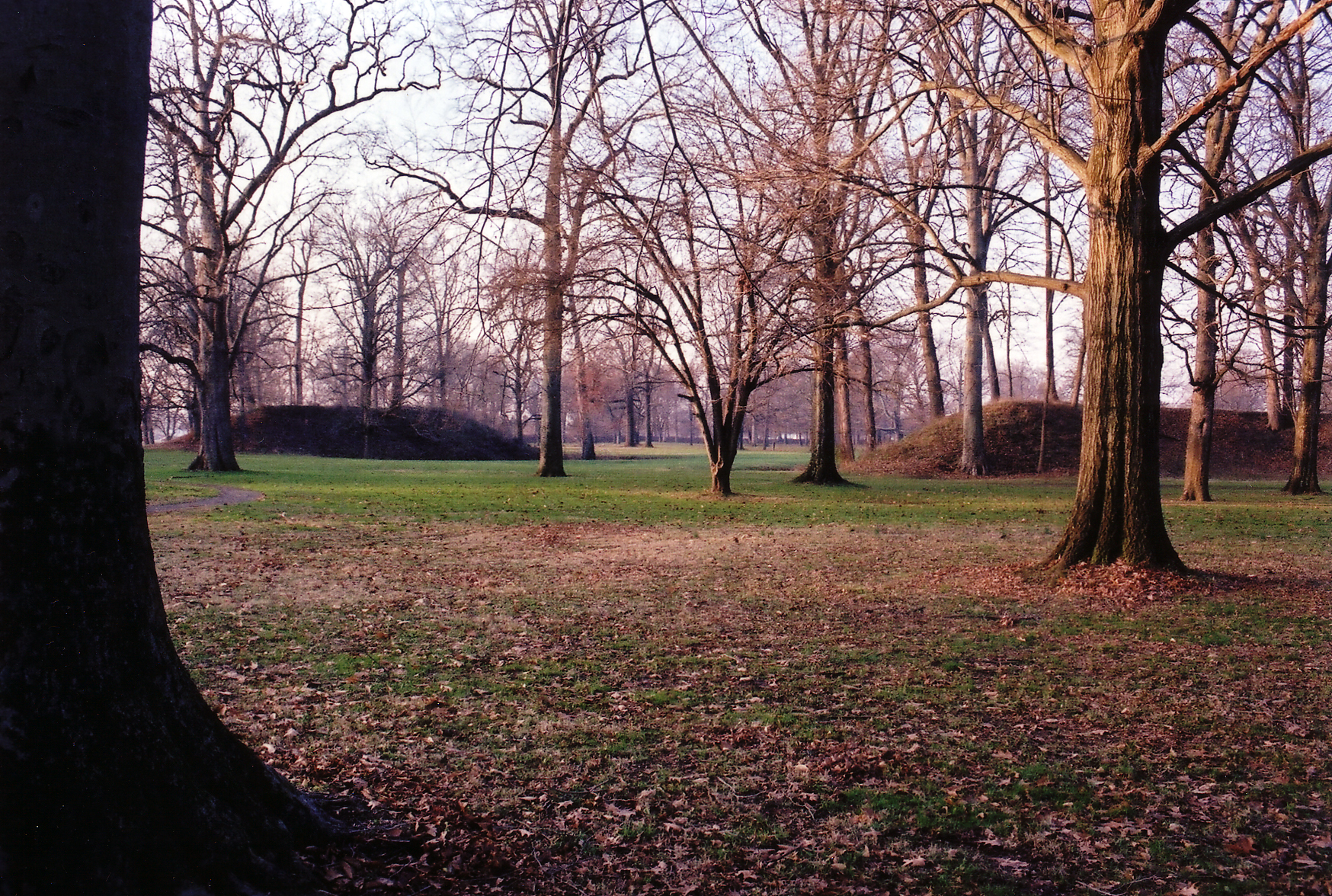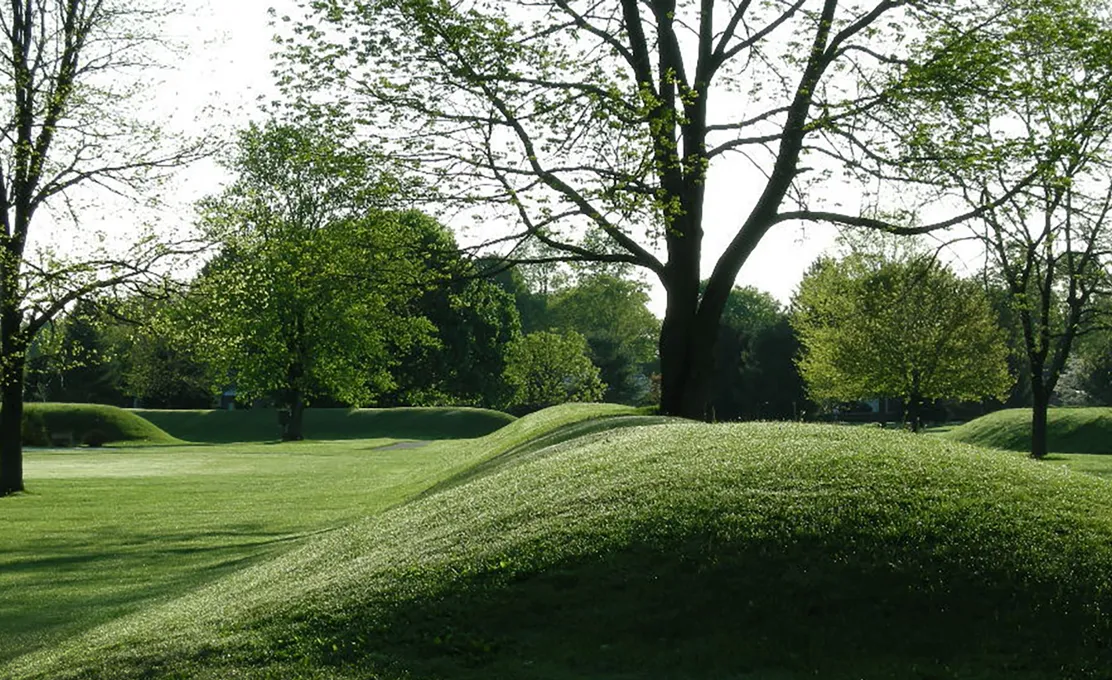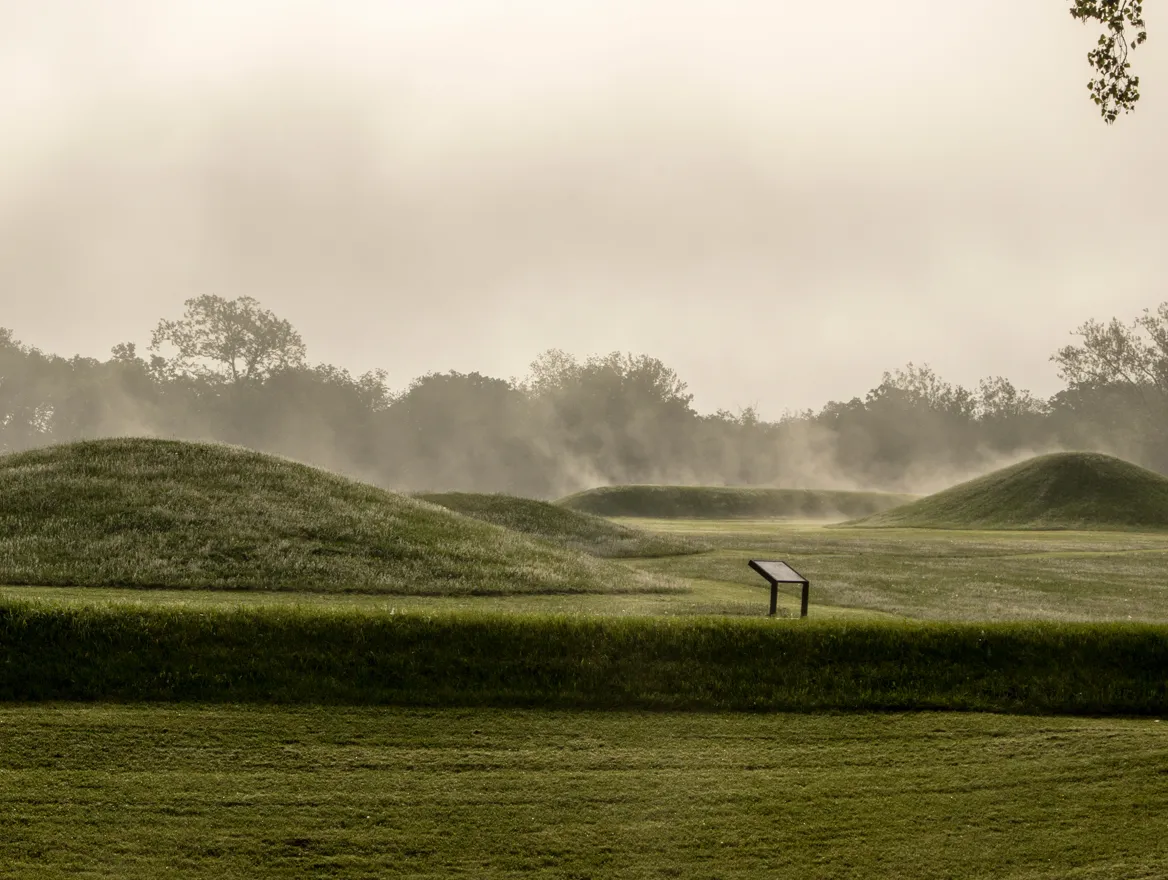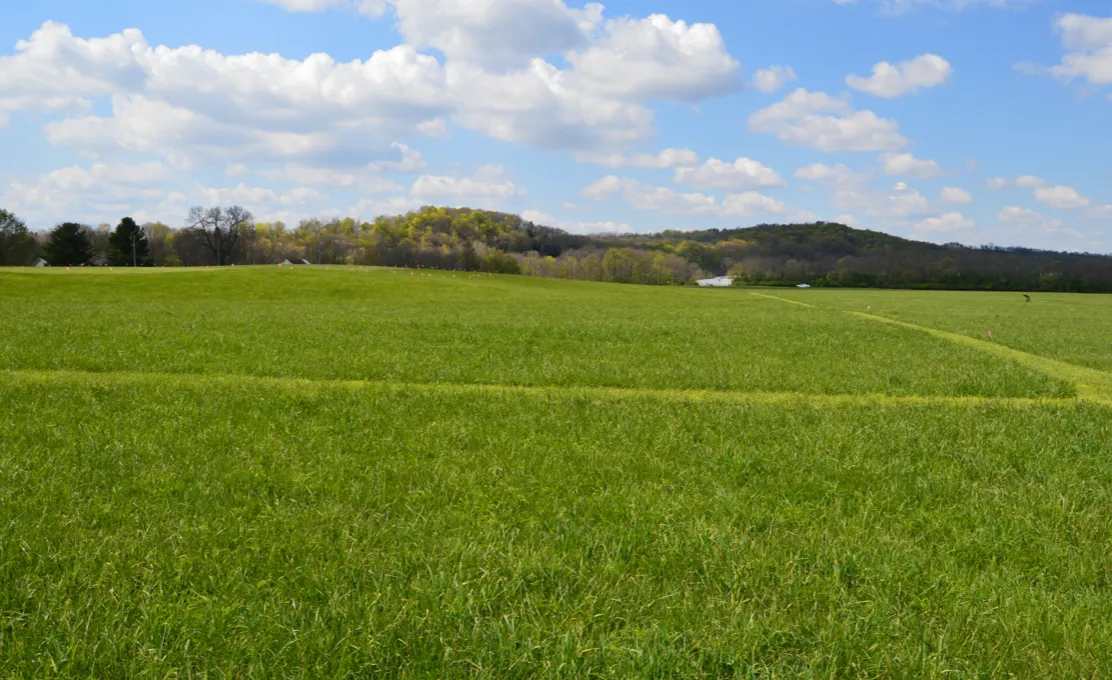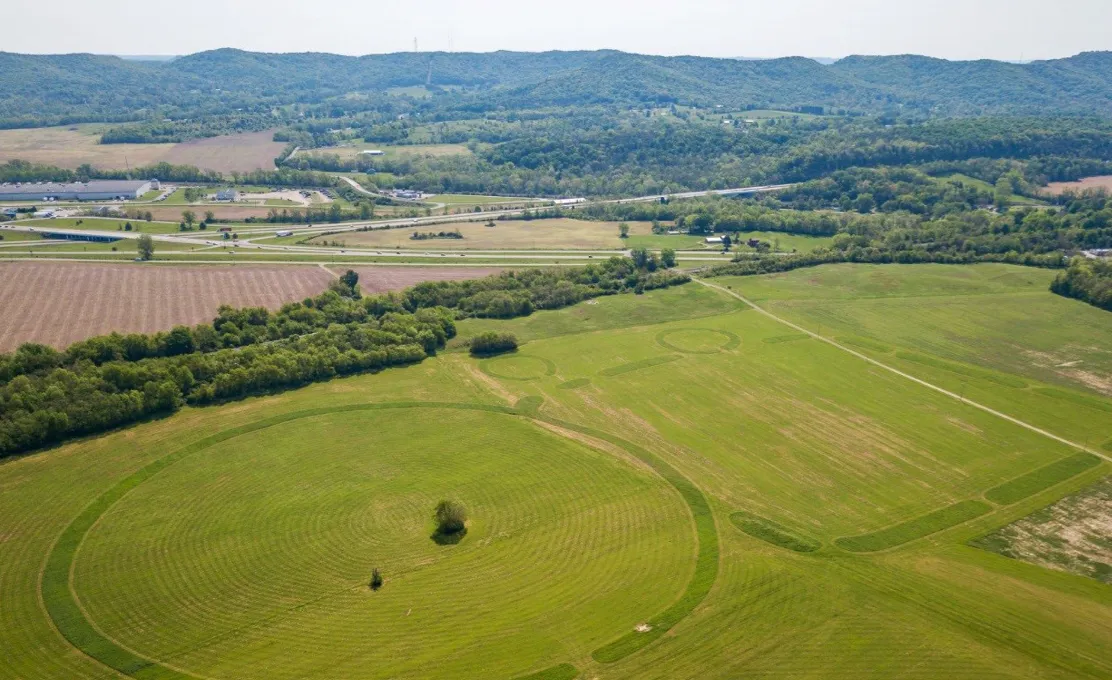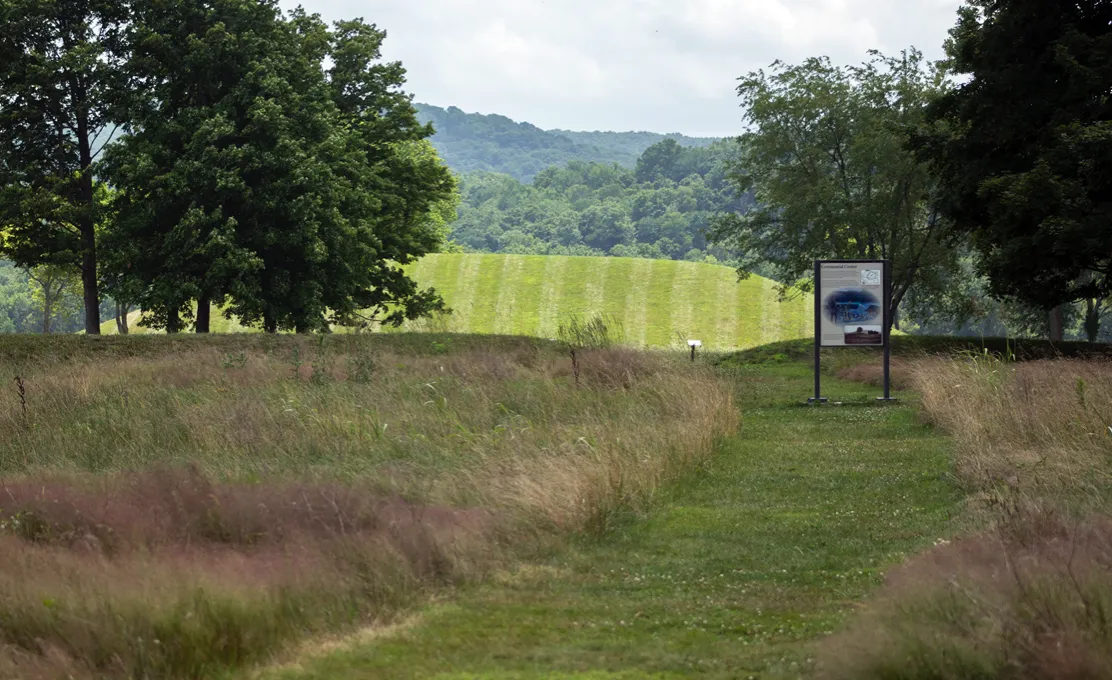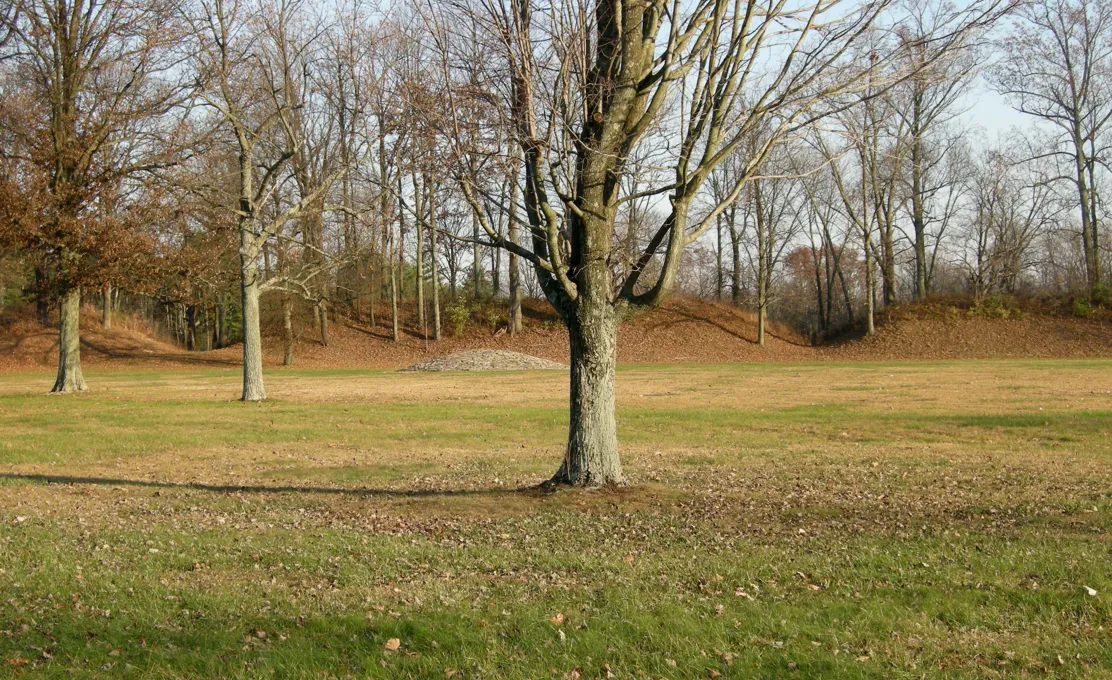The People Behind the Earthworks
Photo by: First Capital Aerial Media
13,000 BCE – 1 CE
Pre-Hopewell Culture
While much of North America was still covered by glaciers, the earliest of the continent’s human population was arriving from Asia, spreading eastward and southward. People were in the Ohio Valley as early as 15,000 years ago, living in wandering bands, gathering plants, and hunting. The distinctive spear points of these Paleoindians, as they are now called, have been found among the bones of long extinct Ice Age animals like the mastodon. Apart from their spear points, little archaeological evidence of these people has been found.
When the glaciers retreated, the tundra and pine-dominated forests of eastern North America were replaced by the “Eastern Woodland” ecology of today—hardwood forests threaded by many rivers and streams. During the Archaic period, from about 8000 BCE, people adapted to the changing climate by exploiting new foods and settling in semi-permanent camps, generally near waterways. They mastered the efficient exploitation of wild food resources such as deer, nuts, roots, and various native plants. They also began experimenting with small-scale horticulture, which by about 800 BCE was transitioning to what is known today as the Woodland Period and the Adena culture.

The Woodland Period (ca. 800 BCE to 900 CE) is generally divided into Early, Middle, and Late phases. The first of these corresponds to the Adena culture, extending to about the year 100 CE. The first burial mounds in the Ohio Valley mark these new beliefs and customs, along with pottery making, elaborate ceremonial practices, beautiful artifacts created in exotic raw materials such as copper and marine shell, and evidence of an increasing commitment to agriculture and a more settled way of life. A stronger sense of community is also evident in their substantial earthen architecture: monumental mounds, ditches, and rings, of which there were hundreds spread across the region. Some of these later became elaborated upon far larger and more complex Hopewell earthworks.
1 CE – 400 CE
Hopewell Culture
By year 1 CE, the Middle Woodland period had ushered in the increasingly elaborate Hopewell culture which dominated the Miami, Muskingum, and Scioto watersheds, and influenced many regions beyond. People began to assemble here over many generations, creating the elaborate earthwork complexes as places of assembly, ceremony, and burial.
The Hopewell heartland corresponds to what is today southern and central Ohio, extending across an area of about 200 by 100 miles. Within that, most earthwork- building activity occurred in three regional clusters—along the Great and Little Miami rivers to the west, among the Muskingum’s upper tributaries to the north, and in the Scioto and Paint valleys in the south central part of the state. Nineteenth-century reports documented nine hilltop “forts” and 37 geometric enclosures of substantial size or complexity, and that are now known to be Hopewell in origin.
While Adena circular earthworks had been more like community “churches” serving a local congregation, Hopewell earthworks were monumental “cathedrals” serving a much larger and far-reaching community. The sacred rituals took place in often huge and elaborate timber shrine buildings, later dismantled and covered with the carefully mounded layers of earth visible today. Within their earthwork sites, and among the remains of these buildings, they left elaborate burials, altars, and beautifully crafted objects.
The Hopewell culture was not a single group of people, but instead a spiritual movement that linked many distinct communities, likely with differing languages, scattered across much of eastern North America. Although the Hopewell heartland was in southern Ohio, evidence of their sphere of influence extends not only to these diverse Eastern Woodland groups, but also to much more distant places.
Long-distance expeditions and pilgrimages are evident from the spectacular artifacts found at these sites, made from mica, copper, obsidian, and seashells brought from what is now North Carolina, Michigan, Wyoming, and the coast of Florida, respectively. These materials accumulated at the Ohio ceremonial centers, apparently without corresponding trade goods returning to their places of origin. This may suggest pilgrimages to the Hopewell heartland by devotees from afar, and long-distance quests by sojourners from Ohio returning with tokens of spiritual power and prestige.
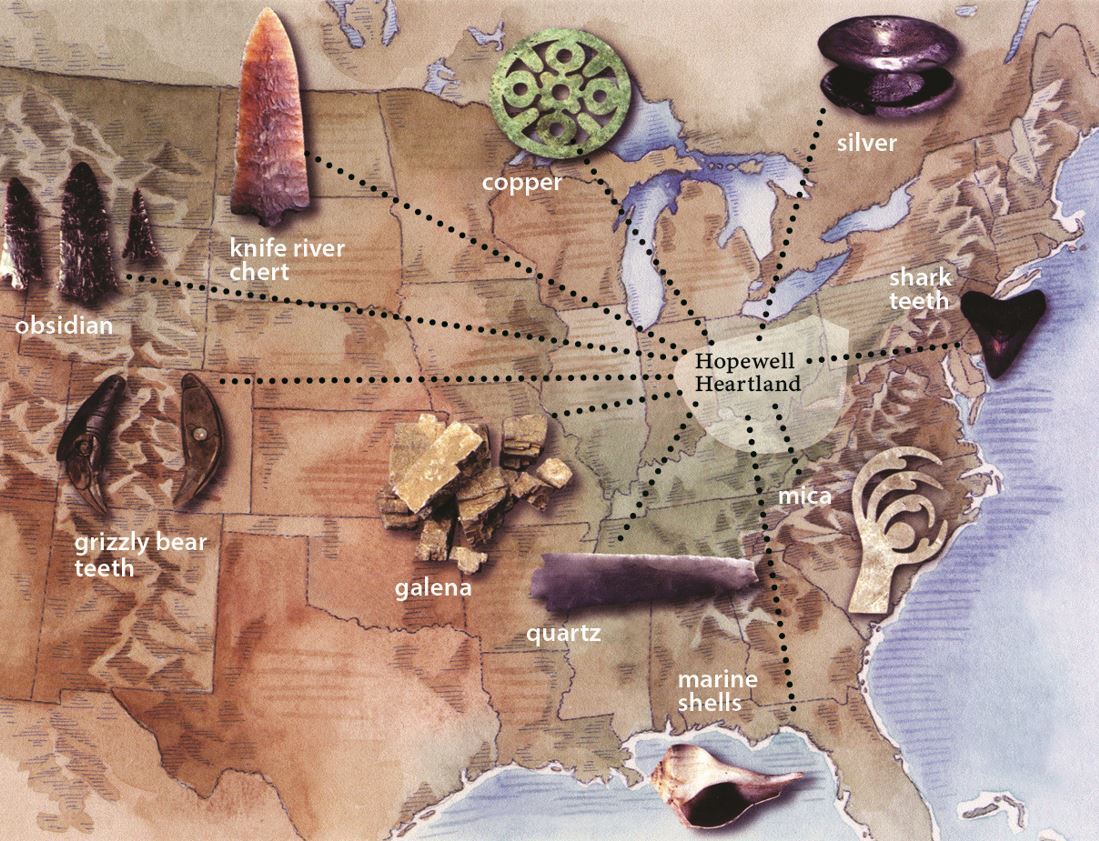
Widespread Hopewell interactions are also evident from cultural practices as far away as Illinois, the Lower Mississippi Valley, and the southern Appalachian summits. These areas are beyond the range of linguistic unity, yet identical forms were present: designs for log-lined tombs, and motifs on locally-made pottery as specific as spoon-billed birds. Perhaps most striking is the use of characteristically Hopewell bi-cymbal earspools. Making these complicated objects required shared, specialized knowledge, as well as copper from far-away Lake Superior. Their distinctive use in burials (held in the hands, as well as on the ears) demonstrates shared meanings and beliefs about the uses of visual symbols and regalia.
Daily life occurred in small settlements of just a few households, organized by kinship into local communities. Built within each one were several functionally distinct ceremonial grounds marked by mounds and earthworks. Hopewell social organization is thus very different from the centralized, hierarchical, and hereditary chiefs who later ruled Cahokia and other Mississippian towns and cities. There were no large settlements, and no large dwelling houses or “palaces.” Studies show that everyone, even people buried with much honorific regalia, ate the same foods and worked just as hard as everyone else. Finally, there is no systematic evidence for children having been buried as “chiefs,” indicating that there was no tradition of inherited leadership status.
400 CE–1650 CE
Post-Hopewell Indigenous Cultures
By about 400 CE, forests were reclaiming the hilltop and geometric earthworks. The sites were being used less frequently by then, and no new ones were being built. Over the following centuries, archaeobotanical evidence suggests that the interplay of erosion and deposition of organic matter would have, in effect, maintained the earthwork forms at very nearly their original size, albeit scarred somewhat by the repeated action of fallen, decaying, and uprooted trees.
There is evidence of biological and cultural continuity of American Indian groups into this Late Woodland period, at least from 400 CE to perhaps about 650 CE; it seems the people did not move away or die off, but stopped building mounds or conducting the associated ceremonies. The focus of community and ritual life began shifting from the ceremonial center to the village. They planted larger gardens and began hunting with bow and arrow.
After about 650 CE, the cultural continuities seem to have diminished. Through all these centuries, however, the later American Indian cultures continued to use the earthwork landscapes; the archaeological evidence reflects mostly incidental uses for hunting, gathering, and farming. In the Late Woodland period, the so-called Intrusive Mound culture placed their own burials into the Hopewell mounds and earthworks.
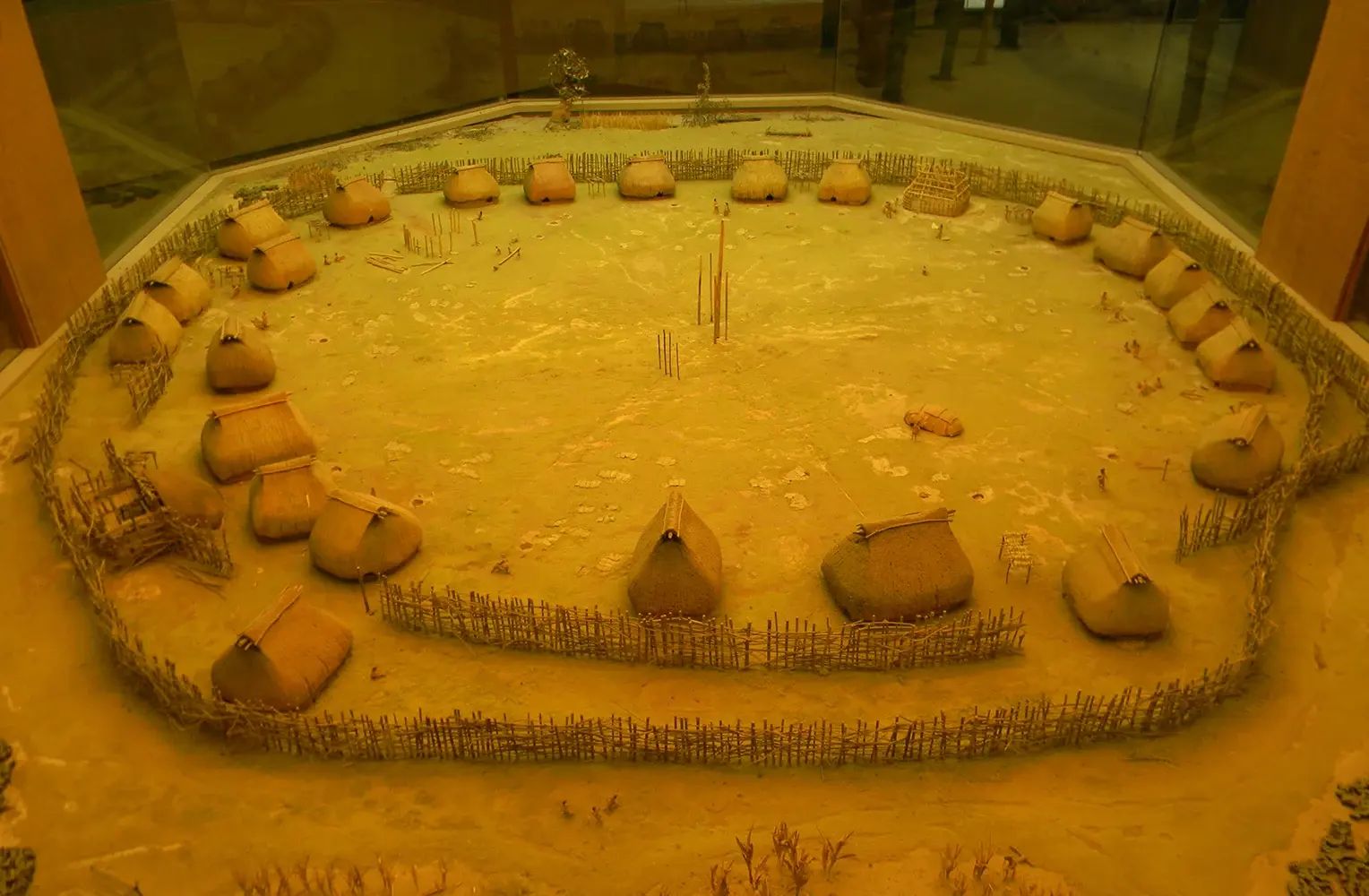
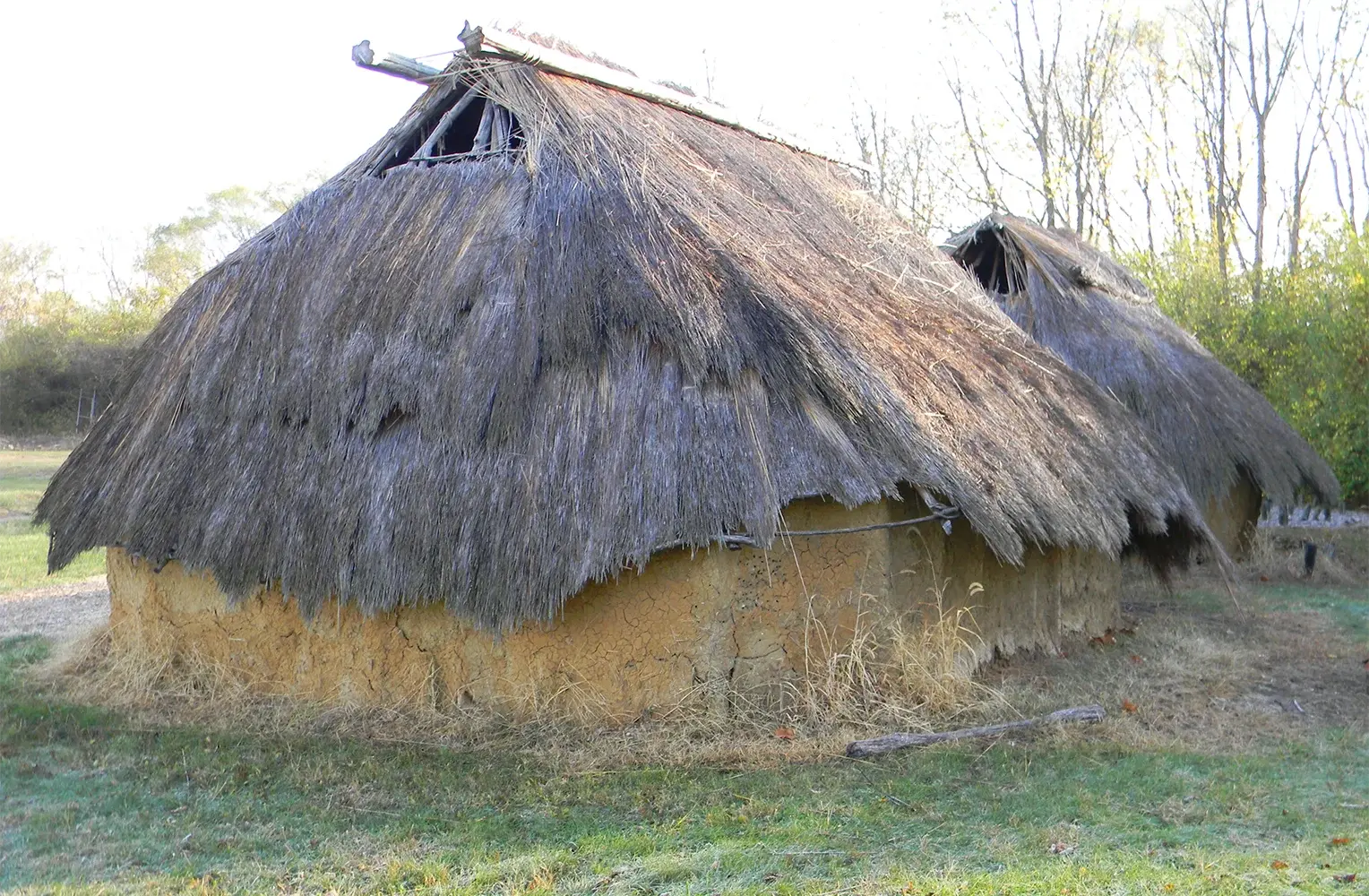
Around 900 CE, the forests in the region were being more widely cleared to accommodate the intensive, large-scale cultivation of maize. From about 1000 until 1650, the Fort Ancient culture (so called because one of their villages was found within the much older, Hopewell-era walls of Fort Ancient) shifted to a sedentary, village-based, agriculturalist way of life. Many villages of the Fort Ancient culture were comprised of circular or rectangular houses surrounding an open central plaza. By the early 1500s, the people had largely withdrawn from the tributary valleys and coalesced into fewer and larger settlements along the main valley corridor of the Ohio River.
By 1550, European goods such as glass beads, brass and copper kettles, and iron nails and axes began to appear in the Ohio Valley, and within one hundred years the region was largely depopulated. Indeed, probably more than 80% of all North American Indigenous peoples died from European diseases within a few decades following the arrival of Columbus and de Soto, as new and virulent infectious diseases swept across the continent from village to village along traditional trade routes ahead of the advancing foreigners. These devastating epidemics were followed by Iroquois military incursions, which displaced the surviving groups to refuges largely outside the region.
Witness Ancient Brilliance
The Hopewell Ceremonial Earthworks, a UNESCO World Heritage Site, span several locations in Ohio. Each earthwork has its own marvels and wisdom to reveal, and is worthy of witnessing firsthand.
